Carola Hein, Ouafa Messous, Paolo De Martino and John Hanna
Interested in discovering Morocco first-hand while learning about the dynamics of port-city territories through practice? PortCityFutures is hosting a 5-day professional workshop, “Creating a Vision for Port Cities: Workshop and Fieldtrips. Morocco Edition”.
The program combines field visits to Rabat, Salé, Casablanca, Tangier City, and Tangier Med with hands-on learning and expert discussions on strategies for resilient, multifunctional port spaces that reflect diverse stakeholder values.
Sign up here: www.aanmelder.nl/pcfmorocco/home
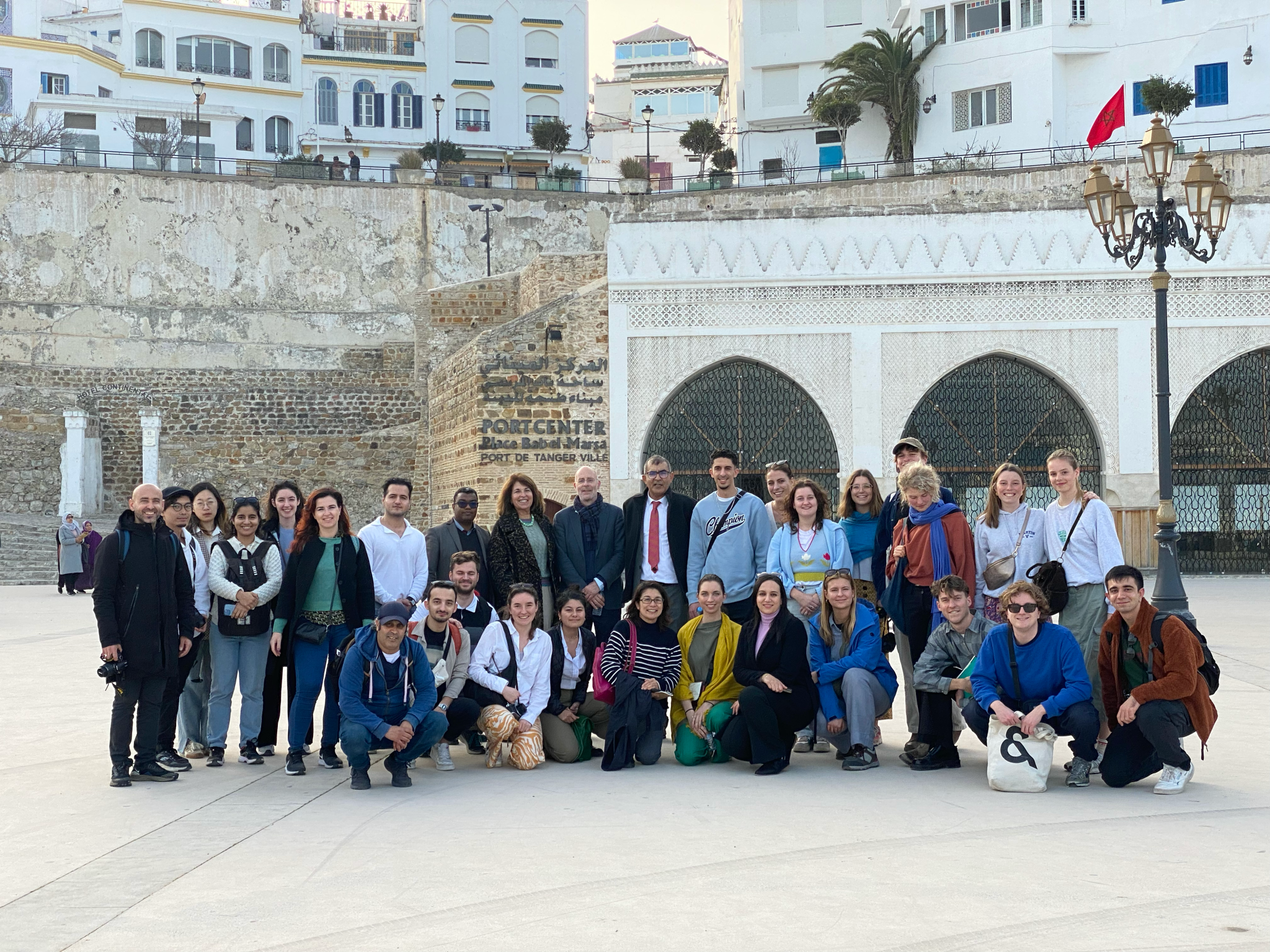
Ports are key nodes in the distribution of goods and people on a global scale. They link diverse territories and impact nearby cities and territories. Understanding the ways in which maritime flows shape territories on sea and land and using them to improve cities and landscapes in the short- and long-term is key to future sustainable development. Architects, planners and landscape designers can play a key role in this process; to do that, they first have to understand the role ports play in space, society and everyday life. Developing sustainable port city territories (Hein, 2023) requires keen awareness of intricate relationships regarding space and governance. In line with this premise, the Master Course Adaptive Strategies: Designing Scenarios for Port Cities, coordinated by Carola Hein and run by teachers Paolo De Martino and John Hanna at Delft University of Technology, focuses on educating architects, planners and landscape designers to understand the specific conditions of port city territories, including long-term developments and path dependencies.
Each year, Adaptive Strategies has been exploring different port cities, including Beirut, Naples, Venice and Rotterdam, as documented in a recent book publication on Beirut (Hein & Hanna, 2023) and in virtual exhibitions and blogs. We chose those cities as the focus for our investigations, because each faced specific challenges: Beirut struggled with its reconstruction following the tragic explosion of 2020 that incurred significant damage to both port and city. Naples needs to address challenges of sustainable and socially just development. Venice has historically grappled with highly variable water conditions, which now necessitate the identification of innovative adaptation solutions. Rotterdam, Europe’s largest port, needs to transform its carbon-based economy. Over the years, students have studied port-city integration–or the lack thereof–in these cities and produced diverse and powerful visions.
In 2023, we selected Morocco as a primary location for examining the role of ports in cities and territories and to develop new strategies for addressing urgent problems. Morocco, as a nation, is renegotiating its role within the Mediterranean, in Africa and the world. This effort has been confirmed through recent statements by King Mohammed VI and the European Investment Bank representative in Morocco, who have argued for Morocco’s role as a gateway to Africa (Maroc.ma, 2023). In such a policy, ports and coastal areas play a key role, raising the question: How does this (renewed) interest in the coastal edges of the country reshape port city territories–that is, the spaces on land and sea most influenced by flows of goods and people? How can designers contribute novel approaches that go beyond master planning?
The 2023 edition of the course took students to Morocco with the aim of rediscovering the relationship between ports, their nearby cities and territories and their larger contexts. The route included several locations, which covered both the Atlantic coast–with the cities of Rabat, Salé and Casablanca–and the Mediterranean ports of Tangier and Tanger Med, where students had the opportunity to experience both the historic scale of a port that is embedded in the city, and the scale of a new deep-sea port that sprawls along the coast and serves as an entrance not only to Morocco, but also Africa. In a dinner conversation with the tutors, while reflecting on the field trip and the apparent transformation of the Moroccan coastline, Carola Hein suggested the concept of sea-ing Morocco, as a way to conceptualize the current turn towards maritime flows and coastal infrastructures and its impact on nearby cities and territories.
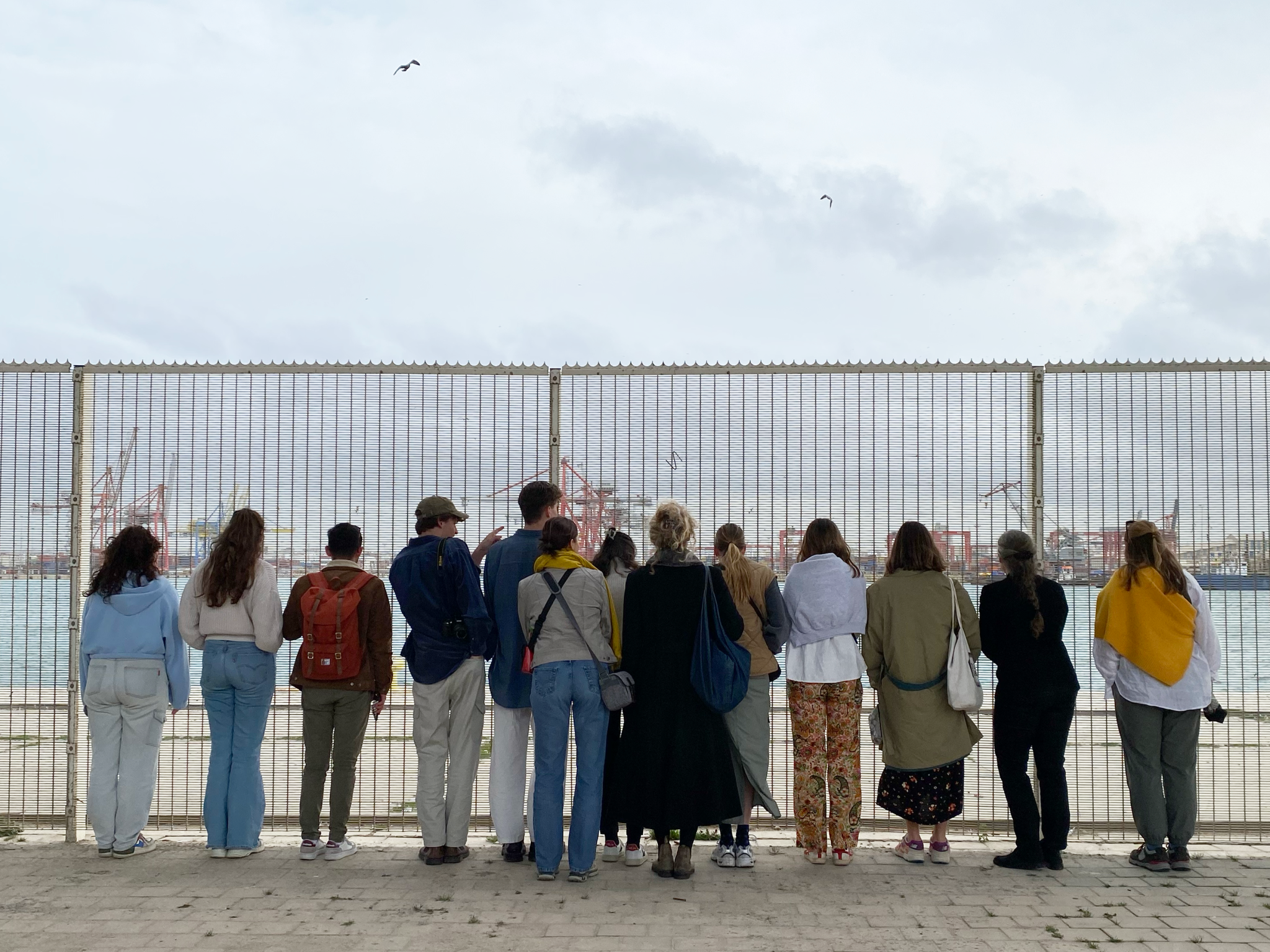
In preparation for the trip, students were first asked to consult a wide set of literature that included sources on port-city cultures and mindsets and on decolonizing fieldwork and understanding its ethics, as well as tips and tricks for reading the urban setting and spatializing it. The course included elements on the history of Morocco, its cities and territories; the field trip helped students explore and understand the locations in a hands-on fashion. The students were asked: How can we rethink the Moroccan coastline as a unique ecosystem connected to the territory? How can we rethink the economic model of ports to better link them to the lives of the people around these ports? How can we reconnect the port to the cities while preserving the intimate character typical of the local medina?
Morocco Field Trip
As part of the course, students and teachers took a five-day trip to Morocco, facilitated by NIMAR, the Netherlands Institute Morocco. The Director of NIMAR, Professor Léon Buskens, organized a week full of events and discussions on the history of Morocco and its port cities. He also facilitated discussions on how to imagine the future of Moroccan port cities with the Director of ENAR, Ecole Nationale d’Architecture de Rabat, Professor M. Aziz Ouhabi.
On 20 February 2023, the trip started with a welcome session at NIMAR and a tour of Rabat. Walking through the medinas of Rabat and Salé, students explored the medina with its fortified walls and intertwined alleys, and experienced how these structures encapsulate traditions, culture and architectures. They were fascinated by the glimpses of the sea, the coastline, and the blue of the horizon beyond the closed medina. On Day 2, the students embarked on a long bus drive to Tangier, where they visited the Port of Tanger-Med. Later the same day, the students toured the historical center of Tangier, and visited Cinema Rif at the Grand Socco Plaza, which has been reopened following an initiative of the French-Moroccan artist Yto Barrada. The students also had a chance to visit Tangier’s old port headquarters, the promenade, the Kasbah and Ibn Battouta’s Museum. On Day 3, the students carried out fieldwork around the Bouregreg River and joined a design workshop with the students of ENAR in Rabat, as further discussed below. On Day 4, the students visited Casablanca, an emblematic example where the highway between the port and the city is a cultural and spatial fracture cutting people off from the sea. The historic tour organized by architect and academic Aberrahim Kasou (co-founder of Casamemoire, a non-profit organization dedicated to the protection and promotion of Morocco’s 20th-century architecture) led us to understand the different layers of the city, and the impact that colonial planning and infrastructure have had on Casablanca.
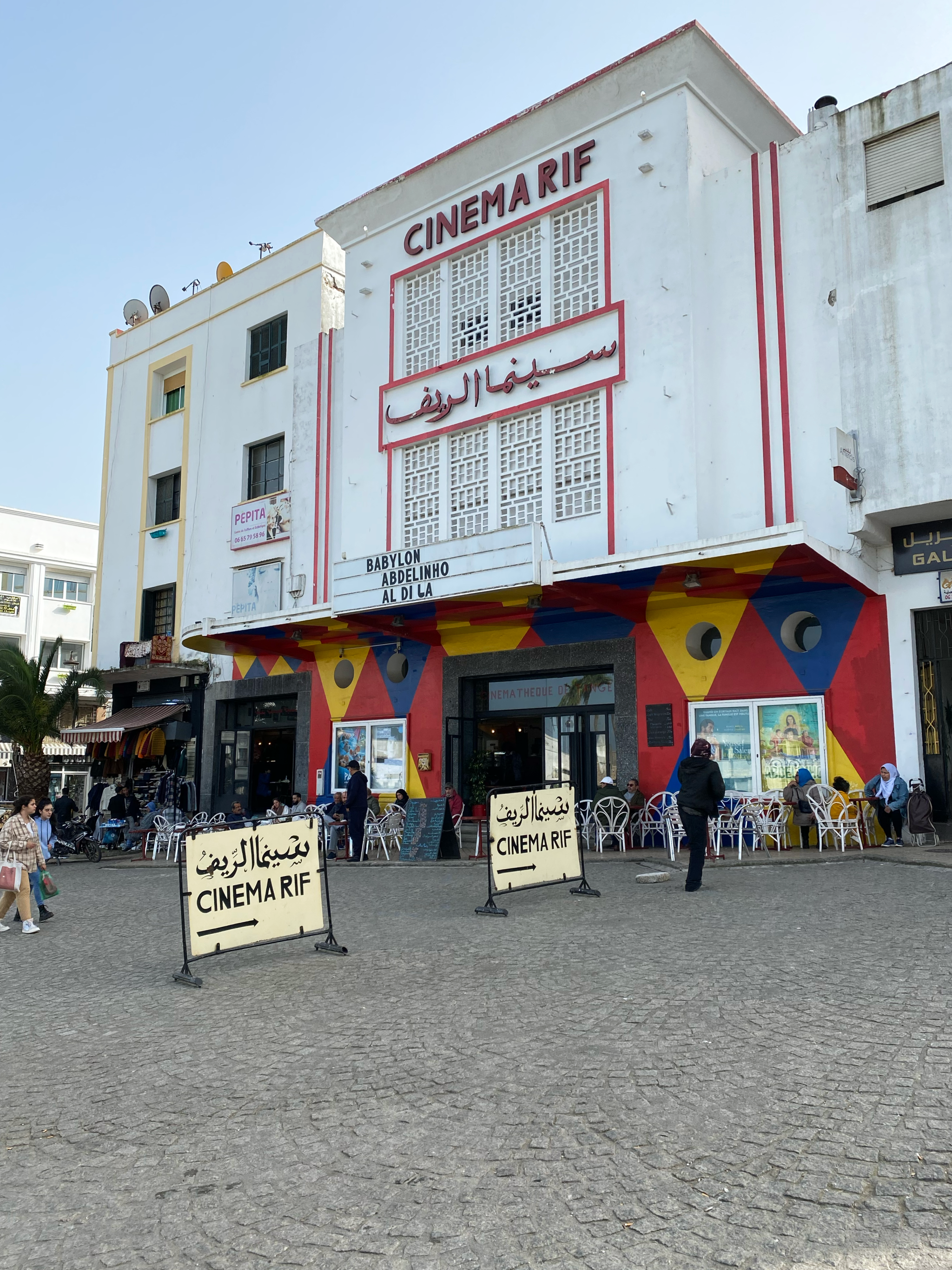
Design Workshop
Students from Delft University of Technology and the Architectural School in Rabat, ENAR, came together to work in a charrette-style design workshop coordinated and supervised by Professor Ouafa Messous from ENAR. Such workshops are typical for education in the field of architecture and urbanism offering specific opportunities, but also challenges. Design education is a specific field, as explored in various studies on how to teach design. Visualization methods that are key to architectural practice can help open up new ideas and provide a tangible representation that can facilitate conversations (De Vere, 2016). A short investigation of a site cannot replace in-depth fieldwork, yet, it can provide fresh perspectives for all participants.
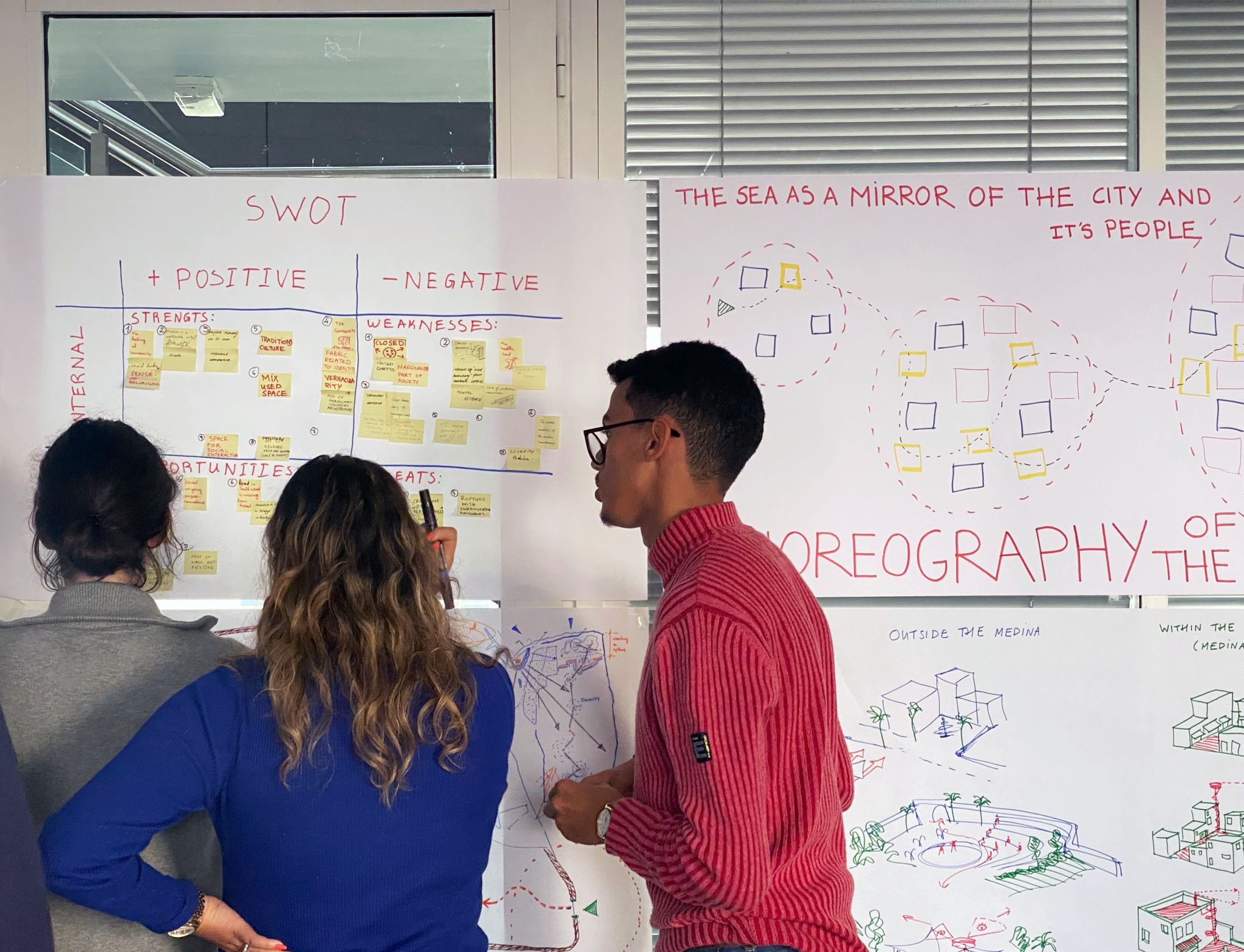
The workshop entitled “Understanding and Planning the Coastal Landscape: Rethinking the port-city relationship” was held in Rabat. Organized in mixed ENAR and Delft groups, the students mobilized their methodological knowledge and their diverse perspectives to read, document and reflect on the spaces of Rabat and Salé, where the waters of Bouregreg and the Atlantic Ocean meet. Bab Lamrissa le Salé, literally the “door of the small port” was the entry point for this workshop and for the discovery of historical fluctuations having, among other things, led to the disappearance of the small port, spatial mutations, resilience and also social resistance. We also considered this natural environment in its terrestrial, aquatic and intermediate dimensions represented by the wetland of the river and the coastline articulating the two tandem cities, facing each other, Rabat and Salé.
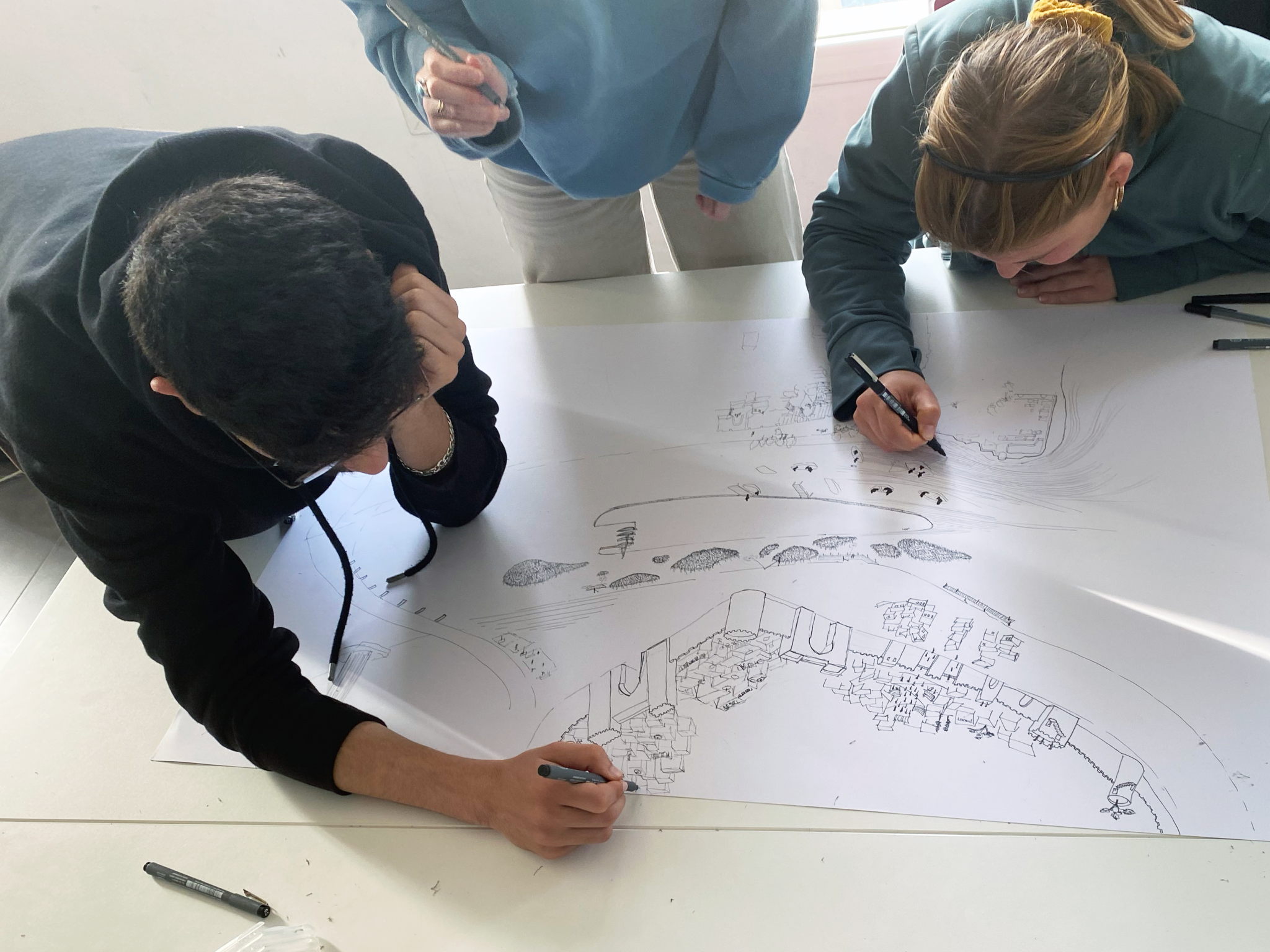
The site is rich in historical value and culture. On these shores, the Phoenicians founded the city of Chellah, today an archaeological site. Rabat, one of the four traditional imperial cities, and the country’s capital, faces the city of Salé, a former merchant port and pirate hub across the Bouregreg River. As the river silted up, Salé began to lose its ability to serve as a port. Recent interventions include design by star architects, such as Zaha Hadid’s Grand Theatre de Rabat. Histories of piracy and colonialism have shaped the cities’ respective waterfronts. In recent years, a new marina has been built with contributions from 2009 designed by Norman Foster & Partners. The newly designed occupation of the mouth of the Bouregreg raises many questions regarding water management and water quality, as human activities pollute the river and challenge the ecosystem, including through the intrusion of saltwater.
Precisely because of its controversial condition, this water space was very interesting for the students. Many of them were fascinated by the spatial complexity of a site where two historically separated cities intersect at the mouth of a river, and where small boats move all day from Rabat to Salé, carrying locals and tourists. This ancient service is now at risk of disappearing due to large-scale real estate development initiatives involving the construction of large residential buildings and huge marinas on the Salé shore. Students raised questions such as these: How can these projects be integrated with people’s lives and with the local culture? Is it possible to safeguard historical practices related to water and its uses? Can we rethink this body of water as a public, inclusive and adaptive space? Together, the teams worked on material aspects, such as rediscovering covered rivers in Salé and the intangible values of urban practices like those related to water and the port.
The dynamics and synergy generated by interdisciplinarity and the diversity of participants’ cultural backgrounds were particularly stimulating for both the students and the team that accompanied them in the different stages of this workshop. The half-day esquisse-format workshop was seen as very productive in its ability to produce multiple design ideas within a short time frame. This observation is in keeping with multiple studies (De Vere, 2016; Mahmoodi, 2001; Van Dooren, 2020). While these analytical and design ‘sketches’ should not be seen as cumulative in any way, they nevertheless aim to disclose a multiplicity of opportunities. By focusing on drawing and sketching as a format to communicate, create and test-by-design multiple “what if?” questions, students are triggered, under the pressure of limited time resources, to develop holistic and progressive solutions for real challenges and problems. These proposals form a specific type of background analysis; they are not to be seen as conclusive. Students understood that their sketches and discussions represented a first step in collecting material. Their final projects reflected deeper analysis and comprehensive literature reviews, and are more context-sensitive and responsive to local needs and means. However, the esquisses helped to provide a primary analysis and inspiration for the projects.
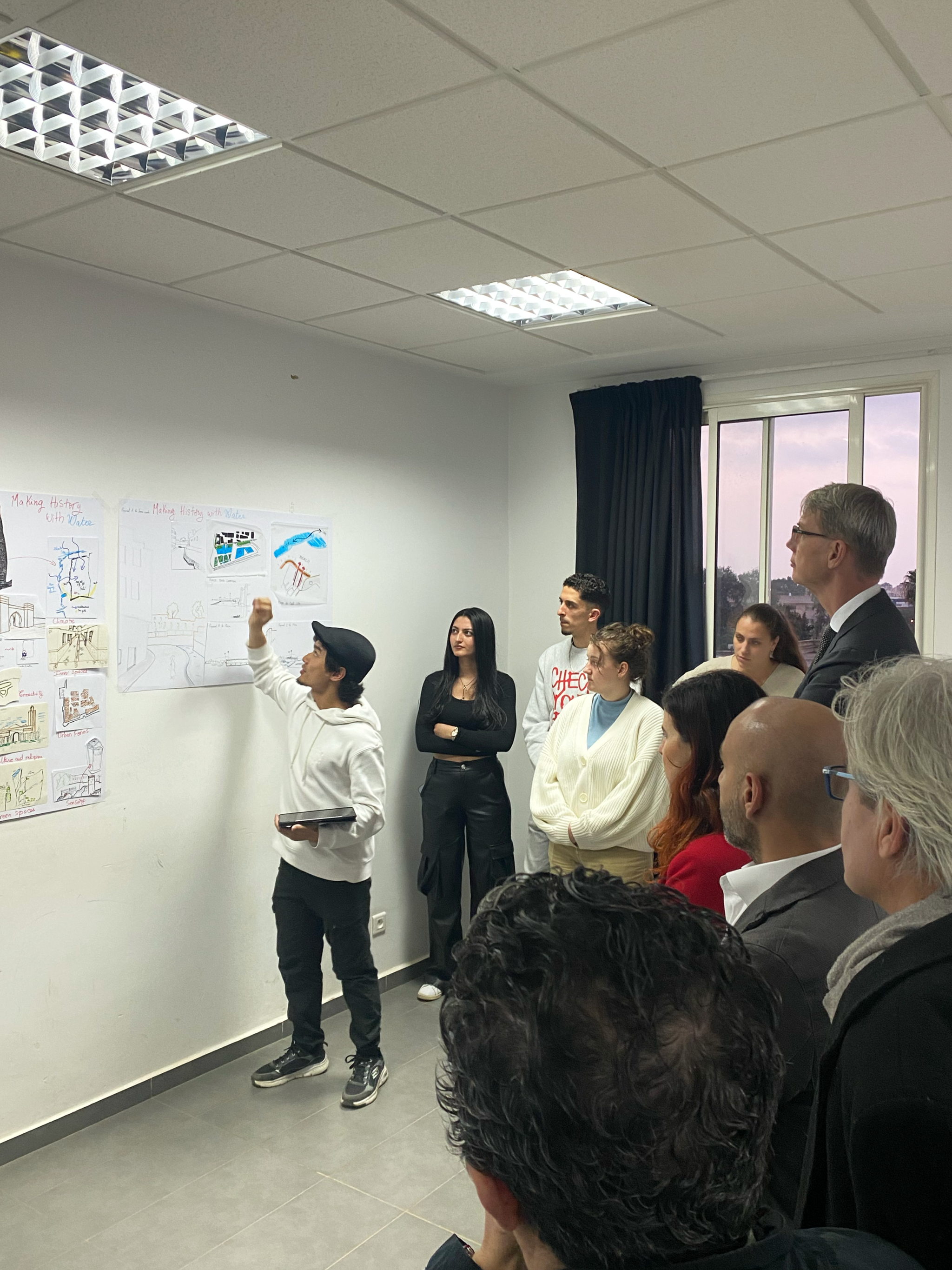
The different reflections carried out by the students, organized in four groups, were an opportunity to explore various forms of graphic, cartographic, verbal, statistical and plastic expressions to tell the story of different thoughts and perceptions exploring sensory, spatial, and socio-economic approaches. Together, the students produced new scenarios to reconceptualize the relationship between the cities of Rabat and Salé at the mouth of the Bouregreg River and the cities’ relation to the sea. Their presentations focused on the phenomenon of coastal development and the accompanying new spatial, social and cultural needs, their potential ecological impact and the development of new centralities. They explored the role of new urban projects as key to the articulation of these spaces and how their interventions relate to spatial inclusivity and exclusivity within the framework of urban dynamics. For students and teachers, it was a learning exercise that brought new insights into local spaces, analytical practices, and cross-cultural collaboration. The presentation at the end of the day was attended by several local professors, including Prof. Aziz Ouahabi (former director of ENAR) as well the Dutch Ambassador in Morocco, H.E. Jeroen Roodenburg. In March, architects Aberrahim Kassou and Karim Rouissi from Casamemoire were hosted in Delft for a workshop with the students to follow up on the development of their proposals and provide guidance for the finalization of the projects.
Outcomes
The course and the field trip have been important contributions for developing student learning and teaching, raising questions about the ethics of charrette-type learning and esquisse as a design-teaching methodology that we will continue to pursue. The design reflections and studies developed during the workshop, the field trip and the course informed the design of an installation titled “Sea-ing Morocco” as part of the exhibition BK Africa: A Laboratory of the Future. The exhibition first took place at the Faculty of Architecture in Delft. It was later included in an exhibition at the Palazzo Mora at the European Cultural Centre in Venice on 18 May 2023 during the Venice Biennale (Delft University of Technology, 2023; European Cultural Centre, 2023). The course and field trip have been inspiring several follow-up projects and new activities, including grant applications, notably LDE Global and LUF grants on “Sea-ing Africa: Tracing Legacies and Engaging Promises of Big Infrastructure Projects in Port City Territories in Ghana and Morocco” (Hein & Luning, 2024).
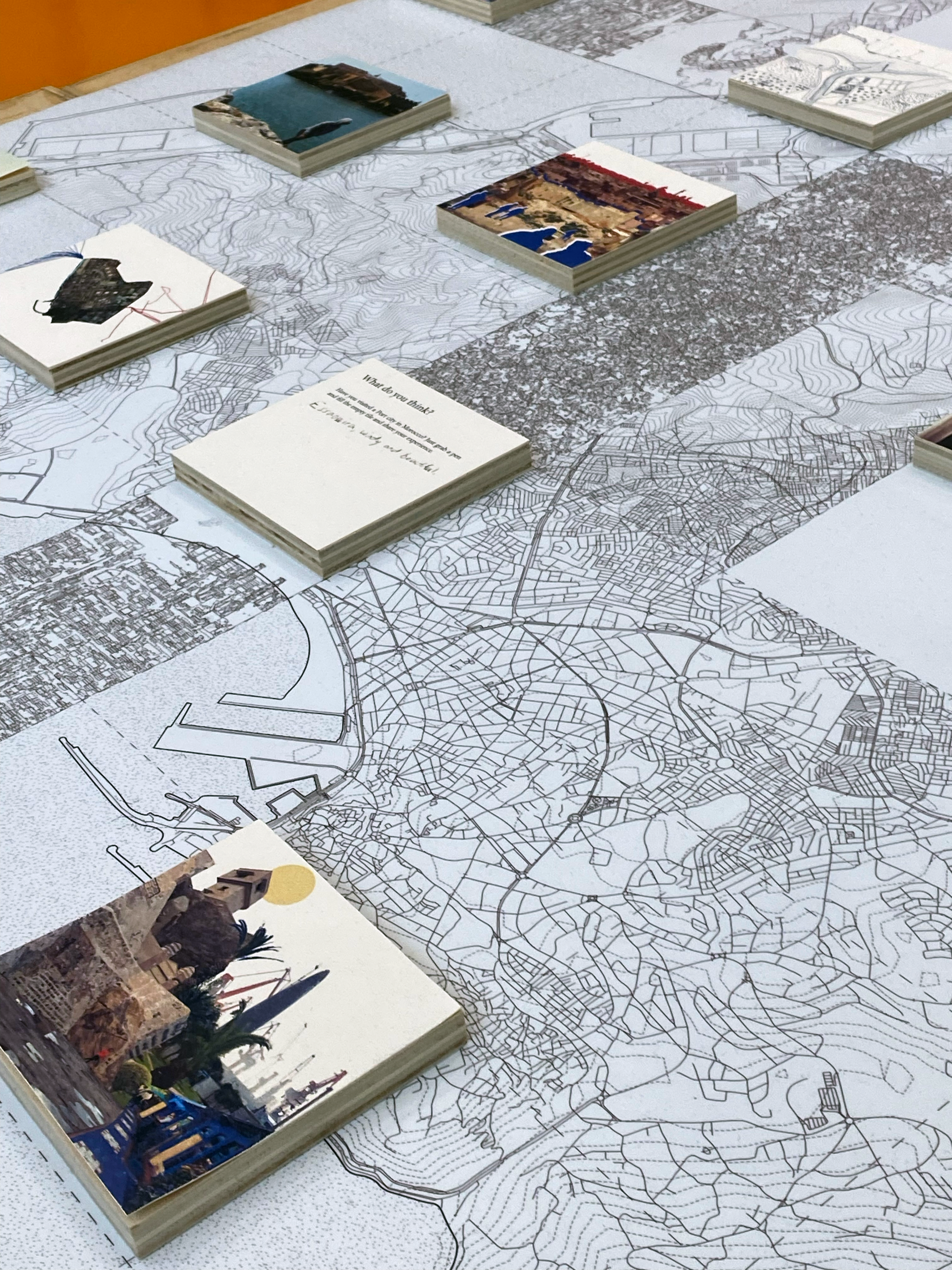
A virtual exhibition of a selection of the students’ projects can be accessed here:
https://www.portcityfutures.nl/ar0110-adaptive-strategies-designing-scenarios-for-port-cities
Course Participants:
Aimilia Nteka, Augusta Fiseryte, Babette van Tilborg, Benthe Thielen, Bernice Demiddeleer, Carlotta Luciano, Eirini Sideri, Erkan Mestan, Estelle Veron, Fenne Wijminga, Gabriel Bani, Gianluca Angeli, Heime ‘t Hart, Iris van Leeuwen, Jacky Lai, Kim Schoenmakers, Kjestyn Yee, Marc Kremer, Marianna Angelini, Marie Benninghoven, Max Bernaerts, Meriam Sehimi, Mila Kovacev, Nessie Hu, Nino Vogels, Robin Ringel, Sander Geluk, Sanjana Maria John, Savvina Megalovasili, Sivan Maruf, Trijntje Verschuren, Younes Chergui
References
De Vere, I. (2016). Back to Basics: Using Esquisses to Develop Core Design Skills. DS 83: Proceedings of the 18th International Conference on Engineering and Product Design Education (E&PDE16), Design Education: Collaboration and Cross-Disciplinarity, Aalborg, Denmark, 8-9 September 2016, 83-8.
Delft University of Technology. (2023). Exhibition BK Africa: A Laboratory of the Future? On Show in Venice. https://www.tudelft.nl/en/2023/bk/exhibition-bk-africa-a-laboratory-of-the-future-on-show-in-venice
European Cultural Centre. (2023). Time, Space, Existence: Venice 2023 Architectural Biennial–Palazzo Mora, Palazzo Bembo and Marinaressa Gardens. European Cultural Centre. https://ecc-italy.eu/files/TSE_2023_Online_V3.pdf
Hein, C. (2023). European Port City Territories in the Past, Present and Future. In C. Hein, Y. van Mil, & L. A. Momirski, Port City Atlas - Mapping European Port City Territories: From Understanding to Design. Nai010.
Hein, C., & Hanna, J. (2023). Design Pedagogies in Times of Crisis: Six Universities—Six Studios on Post-Blast Beirut Reconstruction. Stichting OpenAccess Platforms. https://research.tudelft.nl/en/publications/design-pedagogies-in-times-of-crisis-six-universities-six-studios
Hein, C., & Luning, S. (2024). Sea-ing Africa: Tracing Legacies and Engaging Future Promises of ‘Big’ Infrastructure Projects in Port City Territories in Ghana and Morocco. PortCityFutures Research Blog. https://www.portcityfutures.nl/news/sea-ing-africa-tracing-legacies-and-engaging-future-promises-of-big-infrastructure-projects-in
Hein, C., van Mil, Y., & Momirski, L. A. (2023). Port City Atlas: Mapping European Port City Territories: From Understanding to Design. nai010 publishers.
Mahmoodi, A. S. (2001). The Design Process in Architecture: A Pedagogic Approach Using Interactive Thinking. Doctoral dissertation, The University of Leeds. https://etheses.whiterose.ac.uk/2155/1/uk_bl_ethos_543080.pdf
Maroc.ma. (2023, November 9). Morocco Is ‘Exceptional’ Gateway to Africa, Says EIB Representative. Maroc.Ma (Kingdom of Morocco National Portal). https://www.maroc.ma/en/news/morocco-exceptional-gateway-africa-says-eib-representative
Van Dooren, E. (2020). Anchoring the Design Process: AFframework to Make the Designerly Way of Thinking Explicit in Architectural Design Education. Doctoral dissertation, Delft University of Technology. https://journals.open.tudelft.nl/abe/article/view/5351/4803
